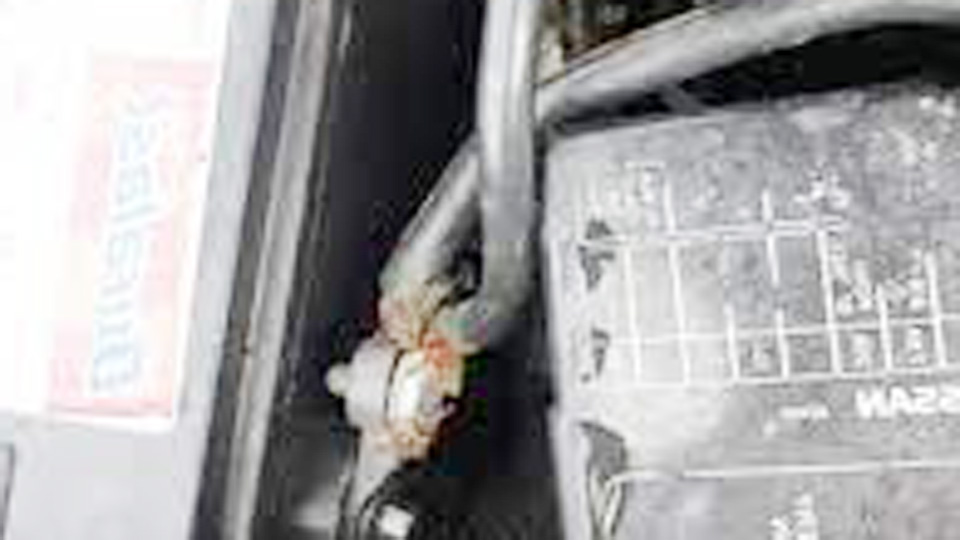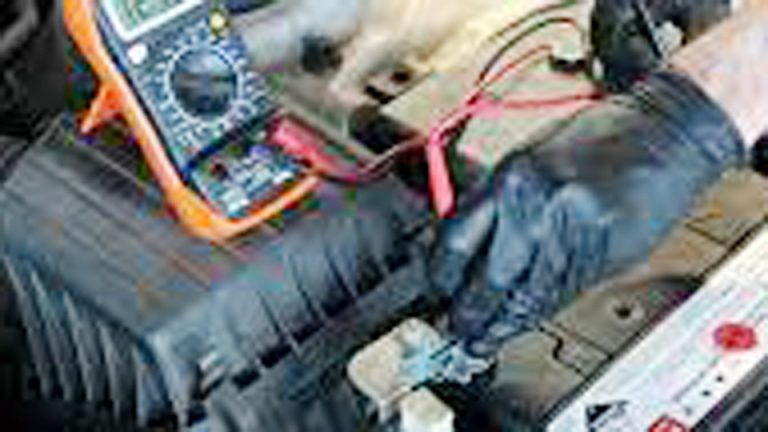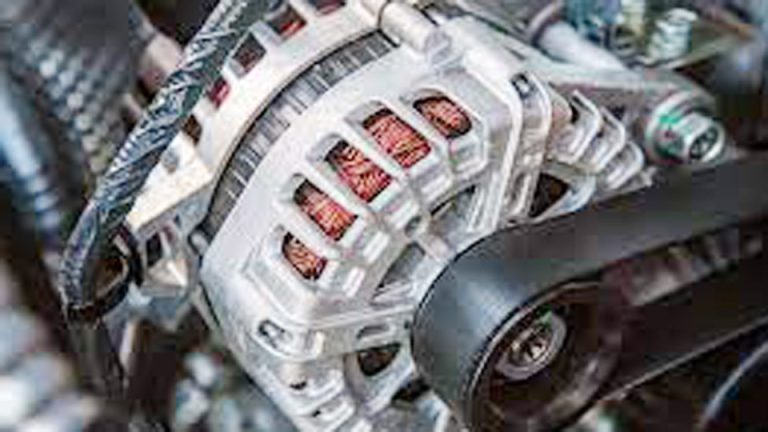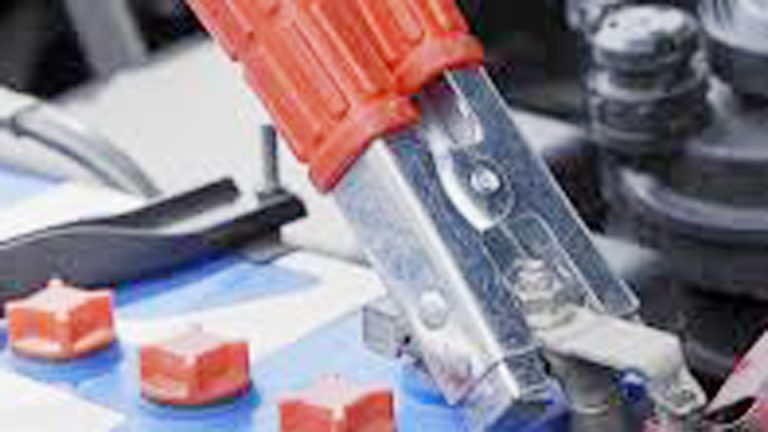I still remember the first time I turned the key and got nothing but a faint click. No cranking, no engine rumble—just silence. Like a lot of car owners, my first thought was, “Great, the battery’s dead.” But after swapping in a new one and still getting the same no-start issue, I discovered the real culprit: bad battery cables. If you’ve ever wondered, “Can bad battery cables cause a car not to start?” the answer is a big yes—and it happens more often than you think.
Corroded, loose, or damaged cables can block the power flow your starter needs, leaving you stranded and scratching your head. This is more than just an inconvenience; ignoring it can lead to bigger electrical problems, costlier repairs, and even safety risks. In this guide, I’ll walk you through how to spot the signs, avoid common mistakes, and fix the problem before it ruins your day.

Image by clubfrontier
Why Battery Cables Matter to Your Car’s Starting System
Your car’s battery is like its heart, pumping electrical energy to start the engine and power everything from your headlights to your infotainment system. But the battery doesn’t work alone—it relies on battery cables to deliver that energy. These cables, one positive (red) and one negative (black), connect the battery to the starter, alternator, and ground points on the chassis. If the cables are bad—think corrosion, fraying, or loose connections—the power can’t flow properly, and your car might not start.
I’ve seen this firsthand with my neighbor’s Ford F-150. He swore the battery was fine because he’d just replaced it, but the truck wouldn’t turn over. After a quick check, I found the positive cable coated in white, crusty corrosion. A little cleaning and tightening, and it roared back to life.
Bad cables can mimic a dead battery or a faulty starter, so they’re often the first thing I check when a car won’t start. They’re critical because they handle high electrical loads, especially during startup, when the starter motor demands a huge surge of current.
In the U.S., where we deal with everything from freezing winters to blistering summers, cables face extra stress. Salt on roads in places like Ohio or Minnesota can accelerate corrosion, while heat in Arizona or Florida can degrade insulation over time. Knowing how these cables function and why they fail is key to keeping your car reliable.
Signs of Bad Battery Cables
So, how do you know if your battery cables are the problem? From my experience, there are a few telltale signs that scream “check the cables” before you start replacing expensive parts like the battery or starter. Here’s what to look for:
Visual Clues of Damage or Corrosion
Grab a flashlight and pop the hood. Inspect the cables where they connect to the battery terminals. Corrosion looks like white, green, or blue crusty buildup—think of it like rust for electrical systems.
I’ve seen this a lot on older cars, like my buddy’s 2008 Honda Civic, where neglected cables turned into a science experiment. Frayed or cracked insulation is another red flag, as it can expose wires and cause shorts. Check for loose or wobbly connections, too; they should feel rock-solid.
Electrical Symptoms
If your car won’t start, listen closely. A single “click” or rapid clicking when you turn the key often points to insufficient power reaching the starter, which can be caused by bad cables. Dim or flickering dashboard lights, weak headlights, or accessories (like the radio) cutting out are also clues. I once worked on a Dodge Charger where the owner thought the alternator was shot because the lights were dimming, but it was just a loose negative cable.
Engine Behavior
Sometimes, bad cables cause intermittent issues. Your car might start fine one day but struggle the next. This happens when corrosion or loose connections create inconsistent power flow. My old Jeep Wrangler had this problem—some mornings it started like a champ, others it was dead. A quick cable replacement fixed it for good.
These symptoms can mimic other issues, so don’t jump to conclusions. A systematic check, which I’ll cover later, will confirm if the cables are the culprit.
How Bad Battery Cables Prevent Your Car from Starting
Let’s get under the hood—figuratively and literally—to understand why bad battery cables can stop your car cold. It’s all about electrical flow. When you turn the ignition, the battery sends a high-amperage current through the positive cable to the starter motor, which cranks the engine. The negative cable completes the circuit by grounding to the chassis. If either cable is compromised, the current can’t flow properly, and the starter doesn’t get enough juice to do its job.
Corrosion is a common villain. It acts like a dam, blocking or reducing current flow. I’ve seen cables so corroded they looked like they’d been dipped in powdered sugar. Loose connections are just as bad—they create resistance, which can overheat the cables or terminals.
Frayed or broken wires inside the cable can also interrupt the circuit, like a kinked garden hose stopping water flow. In extreme cases, like on a friend’s Toyota Corolla left in a salty coastal garage, the cables were so degraded they caused a complete electrical failure.
In the U.S., where we drive everything from compact sedans to heavy-duty trucks, the impact of bad cables varies. A V8 pickup needs more starting power than a four-cylinder hatchback, so cable issues hit harder on bigger engines. Cold weather, common in places like Wisconsin, increases electrical resistance, making bad cables even more problematic. Knowing this helps you prioritize cable maintenance, especially if you’re in a harsh climate.
Diagnosing Bad Battery Cables
Diagnosing battery cable issues doesn’t require a fancy shop or a degree in electrical engineering. With a few tools and some patience, you can figure out if your cables are the problem. Here’s a step-by-step guide I’ve used countless times in my garage:
Tools You’ll Need
- Multimeter (cheap ones work fine)
- Wire brush or battery terminal cleaner
- Wrench or socket set (usually 10mm or 13mm for battery terminals)
- Gloves and safety glasses (corrosion is nasty stuff)
- Flashlight for better visibility
Step-by-Step Diagnosis
Safety First: Turn off the car, remove the keys, and put on gloves and glasses. Batteries can be dangerous, so don’t skip this.
Visual Inspection: Check the cables for corrosion, fraying, or loose connections. Look at both ends—battery terminals and where the negative cable grounds to the chassis or engine block. I once missed a corroded ground connection on my Mustang, and it cost me an hour of head-scratching.
Test the Battery: Use a multimeter to check the battery voltage. A fully charged battery should read around 12.6 volts with the engine off. If it’s low, charge it before blaming the cables. This rules out a dead battery.
Check Cable Continuity: Set your multimeter to continuity mode (the beep setting). Disconnect the negative cable first (to avoid sparks), then the positive. Touch the multimeter probes to each end of a cable. If it doesn’t beep, the cable has an internal break and needs replacing.
Voltage Drop Test: Reconnect the cables, then set the multimeter to DC voltage. Place one probe on the battery terminal and the other on the cable’s connection to the starter or chassis. Have someone try to start the car while you watch the multimeter. A reading above 0.5 volts means the cable or connection is resisting current and needs attention.
Clean and Tighten: If you see corrosion, clean it with a wire brush and a mix of baking soda and water (neutralizes acid). Tighten all connections with a wrench. Retest to see if the issue persists.
I’ve used this process on everything from my wife’s Subaru Outback to a buddy’s lifted Ram 1500. It’s straightforward and catches most cable issues. If the cables pass these tests but the car still won’t start, you might be dealing with a starter or alternator problem—more on that later.
Common Mistakes to Avoid
- Don’t assume a new battery means good cables. I’ve seen brand-new batteries paired with corroded cables that caused starting issues.
- Never touch both battery terminals with a tool—it can cause a dangerous short.
- Don’t overtighten connections; snug is enough. Stripping bolts is a headache.
Fixing Bad Battery Cables
Once you’ve confirmed bad battery cables, it’s time to fix them. Depending on the issue, you can clean, tighten, or replace the cables. Here’s how to tackle each, with tips I’ve learned from years of wrenching.
Cleaning Corroded Cables
Corrosion is the most common issue, especially in humid or salty environments like coastal Florida or snowy New England. Here’s how to clean them:
Disconnect the Battery: Always start with the negative cable to avoid sparks. Use a wrench to loosen the terminal.
Mix a Cleaning Solution: Combine a tablespoon of baking soda with a cup of water. This neutralizes battery acid and breaks down corrosion.
Scrub the Terminals: Dip a wire brush or an old toothbrush in the solution and scrub the terminals and cable ends until they’re shiny. I’ve used a cheap battery terminal brush from AutoZone with great results.
Rinse and Dry: Wipe with a clean rag and water to remove residue, then dry thoroughly.
Apply Protection: Coat the terminals with dielectric grease or petroleum jelly to prevent future corrosion. I keep a tube of dielectric grease in my toolbox for this.
Reconnect: Attach the positive cable first, then the negative. Tighten securely but don’t overtighten.
This fixed my neighbor’s F-150 in under 20 minutes. It’s cheap and quick, but if the corrosion keeps coming back, consider replacing the cables.
Tightening Loose Connections
Loose cables are a sneaky problem. I’ve seen them on everything from a Prius to a Corvette. Use a wrench to tighten the terminal bolts, but don’t go Hulk-mode—snug is fine. Check the ground connection on the chassis or engine block, too. A loose ground caused my old Jeep’s intermittent starting issues, and a quick tighten fixed it.
Replacing Bad Battery Cables
If the cables are frayed, broken, or too corroded to clean, replace them. Here’s how:
Choose the Right Cables: Match the gauge (thickness) and length of the old cables. Most auto parts stores carry universal cables, but OEM replacements are best for specific models like a Honda Accord or Chevy Silverado. Expect to pay $20-$50 per cable.
Disconnect the Battery: Negative first, then positive. Take a photo of the setup for reference.
Remove Old Cables: Trace the positive cable to the starter and the negative to the chassis ground. Unbolt them carefully.
Install New Cables: Attach the new cables in reverse order—positive to starter and battery, negative to chassis and battery. Ensure connections are tight.
Test the Car: Start the engine. If it cranks smoothly, you’re golden. If not, double-check connections or test the starter.
I replaced the cables on my 2010 Mustang GT after noticing frayed insulation near the starter. It took about an hour and cost $40 for quality cables. The car’s been reliable ever since.
When to Call a Professional
If you’re not comfortable with tools or the cables look fine but the car still won’t start, it might be the starter, alternator, or wiring harness. A mechanic can run a full electrical diagnostic for $100-$200, saving you from guessing games.
Preventing Battery Cable Issues
Prevention is better than a dead car on a Monday morning. Here are tips I’ve picked up to keep your battery cables in top shape:
Regular Inspections: Check cables every oil change (every 5,000-7,500 miles). Look for corrosion, looseness, or damage.
Use Dielectric Grease: Apply it to terminals after cleaning to ward off corrosion, especially in wet or salty climates.
Avoid Overloading the System: Aftermarket accessories like big stereos or off-road lights can strain cables. Upgrade to heavier-gauge cables if you’ve added power-hungry gear.
Keep the Battery Secure: A loose battery can tug on cables, causing wear. I learned this the hard way on a bumpy dirt road in my Wrangler.
Replace Aging Cables: Cables last 5-7 years on average. If your car’s older, consider proactive replacement, especially for daily drivers in harsh U.S. climates.
Comparison of Battery Cable Types
Choosing the right cables can be overwhelming, so here’s a quick comparison based on what I’ve used:
| Cable Type | Pros | Cons | Best For |
|---|---|---|---|
| OEM Cables | Perfect fit, reliable, often pre-molded | Expensive ($50-$100), not always available | Specific car models (e.g., Toyota Camry, Ford F-150) |
| Universal Cables | Affordable ($20-$40), widely available | May need trimming or adapters, less durable | Budget repairs, older cars |
| Heavy-Duty Aftermarket | Thicker gauge, great for high-power needs | Overkill for stock setups, pricier ($40-$80) | Modified cars, trucks, or off-road vehicles |
For most daily drivers, universal cables from brands like ACDelco or Duralast work fine. If you’re modding a car or live in extreme conditions, go heavy-duty.
Real-World Scenarios and Solutions
Let’s tie this to real life. Here are scenarios I’ve seen where bad battery cables caused starting issues, and how they were fixed:
Winter Woes in Michigan: My cousin’s Chevy Malibu wouldn’t start in 10°F weather. The negative cable was corroded at the chassis ground. Cleaning and applying dielectric grease fixed it.
Coastal Corrosion in Florida: A friend’s Mazda3 sat near the ocean and developed heavy corrosion. Replacing both cables was the only solution due to severe damage.
Off-Road Abuse in Colorado: My Jeep’s cables frayed from trail vibrations. Upgrading to heavy-duty cables prevented future issues.
These show how climate and driving habits affect cables. If you’re in a cold, salty, or rough environment, check cables more often.
Conclusion
Bad battery cables can absolutely cause your car not to start, and I’ve seen it trip up everyone from new drivers to seasoned gearheads. They’re the unsung heroes of your car’s electrical system, and neglecting them can leave you stranded. By understanding the signs—corrosion, loose connections, or electrical gremlins—you can diagnose and fix issues before they ruin your day.
Whether it’s a quick clean with a wire brush or a full cable replacement, these fixes are within reach for most DIYers. Regular checks and a little grease can keep your cables happy, no matter if you’re cruising a California highway or battling a Minnesota blizzard.
FAQ
Can a bad battery cable drain my battery?
Yes, a corroded or loose cable can create resistance, causing the battery to work harder and drain faster. I’ve seen this on a friend’s Nissan Altima, where a loose ground cable led to a dead battery in a week. Tightening it solved the issue.
How often should I check my battery cables?
Inspect them every 6 months or during oil changes. In harsh climates like snowy states or coastal areas, check every 3-4 months to catch corrosion early.
Can I drive with bad battery cables?
It’s risky. Bad cables can cause intermittent starting issues or electrical failures while driving, like losing power to critical systems. I had a buddy’s truck stall mid-highway due to a loose cable—don’t chance it.
How much does it cost to replace battery cables?
DIY replacement costs $20-$80 for cables, depending on quality and vehicle. A shop might charge $100-$200, including labor. I saved $120 doing it myself on my Mustang.
Can bad cables damage my car’s electrical system?
Yes, they can cause voltage spikes or shorts that harm sensitive components like the alternator or ECU. Fix bad cables promptly to avoid bigger repair bills.



